How to Take Screenshots, Screen Recordings on Mac, iPhone, iPad, and Apple Watch – The Complete Guide
Posted on
by
Craig Grannell and Kirk McElhearn
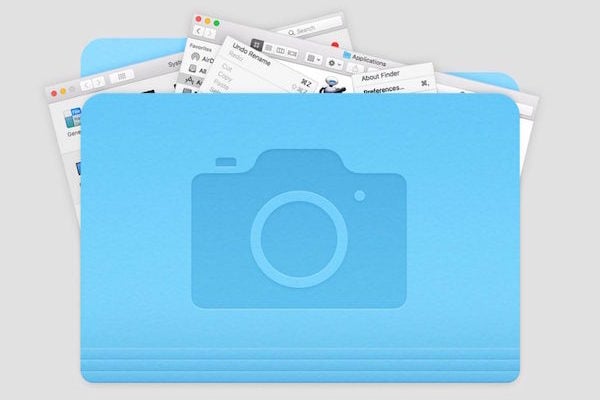
Taking screenshots on your Mac, iPhone, or iPad is a great way to save things. Rather than save a link to a web page, you can screenshot a picture of it, so you can see it exactly as it was at the time you visited it.
You may want take a screenshot when you’ve bought something online, to keep a record of the purchase confirmation. Perhaps you want to remember items you’ve been shopping for on your iPhone or iPad, or to show a friend something you’ve discovered. Or you may take a screenshot of some text to post on social media, or take snapshots of friends in a FaceTime call. You might also need to take screenshots to demonstrate a problem with your device.
On Mac, iPhone, and iPad, it’s easy to take screenshots, crop them, and annotate them. You can save them to the Finder on your Mac, or to the Photos app on your mobile device, so you can access them quickly. And you can even take screenshots of your Apple Watch or Apple TV.
Here’s how to take screenshots, or record a video of the screen, on all your Apple devices.
Take screenshots on Mac and save them
The Mac has always made it easy to take screenshots. You can use the system-wide keyboard shortcuts to take Mac screenshots.
On the Mac, Command-Shift-3 takes a screenshot of the entire screen. When you press those keys, you’ll hear a camera shutter sound and the screenshot will be saved to your Desktop as a PNG file. The document’s filename will include the date and time the screenshot was taken.
Video content protected with HDCP (High-bandwidth Digital Content Protection)—such as a movie or TV show in the TV app—will be blacked out. But otherwise your image shows everything that was on your screen when you took the screenshot.
A plethora of screenshot and screen recording commands
But you can do much more than take a screenshot of your Mac’s entire display. There are several types of screenshots you can take, each with its own keyboard shortcut, whether you use an iMac, MacBook, or a Mac mini with an external display.
- Command-Shift-3 takes a screenshot of the entire screen.
- Command-Shift-4 takes a screenshot of a region. After you press this shortcut, your cursor turns into crosshairs, and you can click and drag to save just part of your screen. As you drag, if you press the space bar, you can move the region around.
- If you press Command-Shift-4, then press the space bar, you can take a screenshot of a window or menu. Your cursor changes to look like a tiny camera, and as you move your cursor across the screen, you’ll see that windows become highlighted in blue. Click to save a screenshot of any window. And if you want to save a screenshot of just a modal window – that’s the type of window attached to an app window that appears, for example, when you press Command-S to save a file – press Command-Shift-4, then the space bar, then the Command key again, then press Return.
- Command-Shift-5 displays the Mac screenshot control bar. This tool lets you choose which type of screenshot to take, but also allows you to make a screen recording, or set a timer. From left to right, the icons are for the entire screen, a window, a region, a video recording of the entire screen, or a video recording of a region.
- Command-Shift-6: if you have MacBook Pro with a Touch Bar, you can take a shot of that strip by pressing these keys.
Additional options when you press Command-Shift-5

After pressing Command-Shift-5, you’ll see the sceenshot control bar. If you click the Options menu, you’ll see a number of customizations for your screenshot or screen recording.
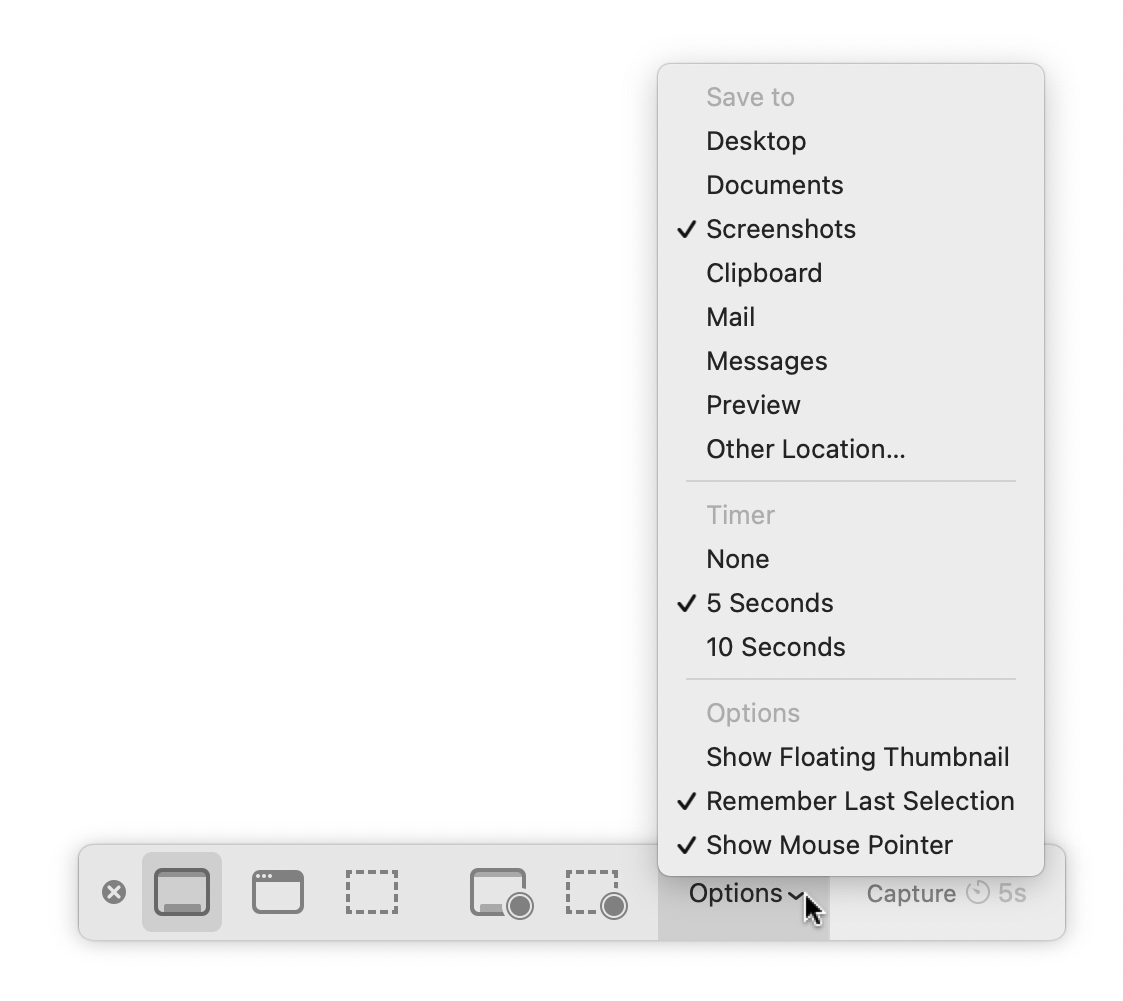
Here’s what you can choose in the Options menu:
- Save to: choose a location to save your Mac screenshots. (See below for more on where screenshots get saved.)
- Timer: if you want a delay before your screenshot, you can choose it here. This is useful for screen recordings more than screenshots. This setting doesn’t apply to screenshots you take using the other keyboard shortcuts.
- Options: You can choose here if you want your Mac to display a floating thumbnail for a few seconds at the bottom right of the display, to remember your last selection (window, region, etc.), and whether or not to display your mouse pointer.
Take a screenshot of an entire web page in Safari
None of the above options can shoot a lengthy web page that spans several screens; they only take screenshots of what you can see. If you do want a screenshot of an entire web page, you can use the Awesome Screenshot & Recorder extension in Safari for that.
Where screenshots get saved on Mac
By default, when you take screenshots on a Mac, they are saved on your Desktop. Some people are fine with saving them there; others find that it makes too much clutter. If you use screenshots often, you might want to create a Screenshots folder somewhere and change the location where screenshots are stored.
To do this, press Command-Shift-5, click Options, and in the Options menu, you’ll see a number of locations (as in the screenshot above). If you want to save your screenshots to a custom folder, click Other Location and choose a folder, or click New Folder to create one. In my example above, I save my screenshots to a folder named Screenshots in my Documents folder. All future screenshots will be saved to that location, not just those that you initiate using this screenshot tool.
Crop and annotate screenshots
Unless you change the floating thumbnail option mentioned above, your Mac shows your screenshot in a thumbnail in the bottom right corner of your display for a few seconds. If you click that thumbnail, you’ll be able to crop and annotate your screenshot. There are lots of tools at the top of this window: see this Apple support document for more details.
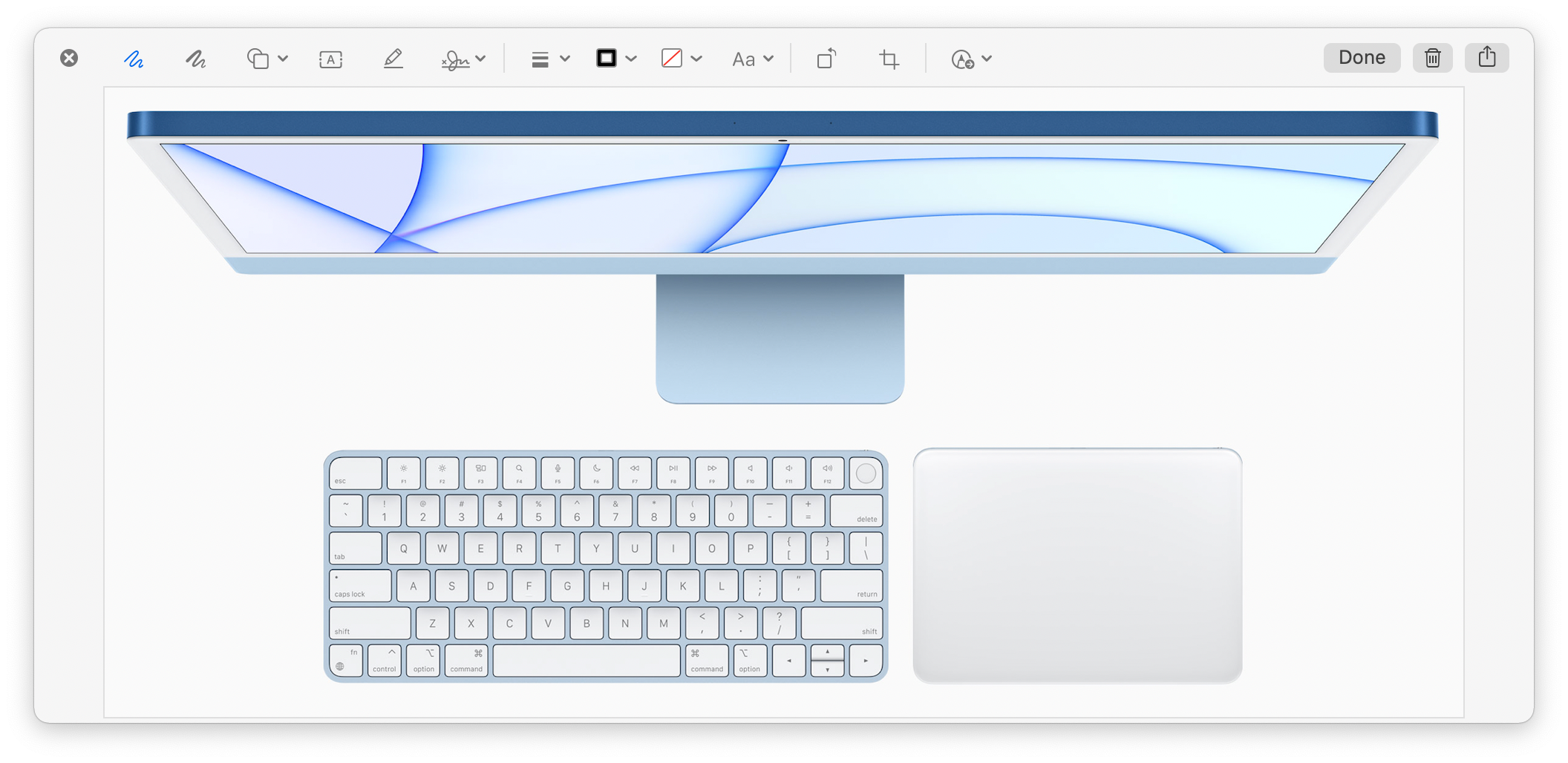
Take Mac screenshots using Screen Sharing
If you’ve got multiple Macs, you can capture screenshots via Screen Sharing, which is handy for being able to focus purely on what you’re shooting on one Mac, while doing the actual shooting and saving on another.
You activate Screen Sharing on a Mac by checking the Screen Sharing box in System Preferences > Sharing. In the Finder’s sidebar on your other Mac, select the shared computer, click Share Screen, and type in the username and password you use to access that Mac. The Screen Sharing app will launch, and the shared Mac’s desktop will appear inside a window.
Screenshots can be saved at any point using Connection > Save Screen Capture As… (to which you can assign a shortcut in the Keyboard pane of System Preferences, if you wish).
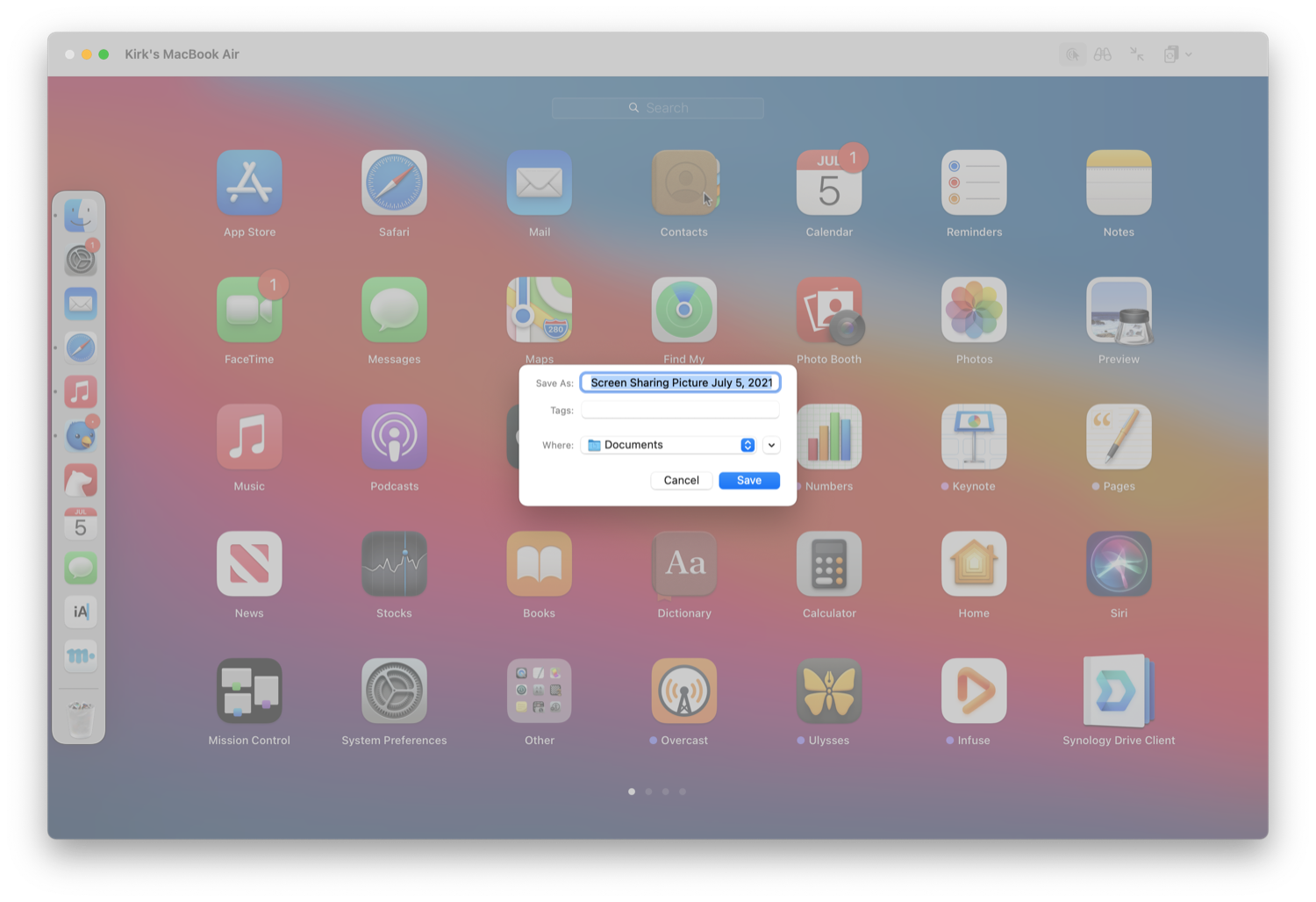
If you take screenshots this way, be mindful of two things. First, ramp up quality settings (View > Full Quality), or your screenshots will look like compressed JPEGs. Second, if the shared computer’s display is bigger than the one you’re sharing it with, turn off scaling in the View menu. Otherwise, your screenshots won’t be at native resolution; instead, they’ll scale to the size displayed within the Screen Sharing app.
Capture screenshots on iPhone and iPad
You can take a full-screen screenshot on an iOS or iPadOS device (an iPhone, iPad, or iPod touch) by pressing a couple of buttons.
If you have a device with Face ID, press the press the volume up button and the power button (i.e. the sleep/wake button) at the same time. If your device has a Home button on the front (including devices with Touch ID), press the Home button and the power button simultaneously.
When you do this, you’ll see a thumbnail at the bottom left of the screen. If you do nothing, or if you swipe left to remove it, the screenshot gets saved to the Photos app. If you tap the thumbnail, you have access to editing and annotation tools.
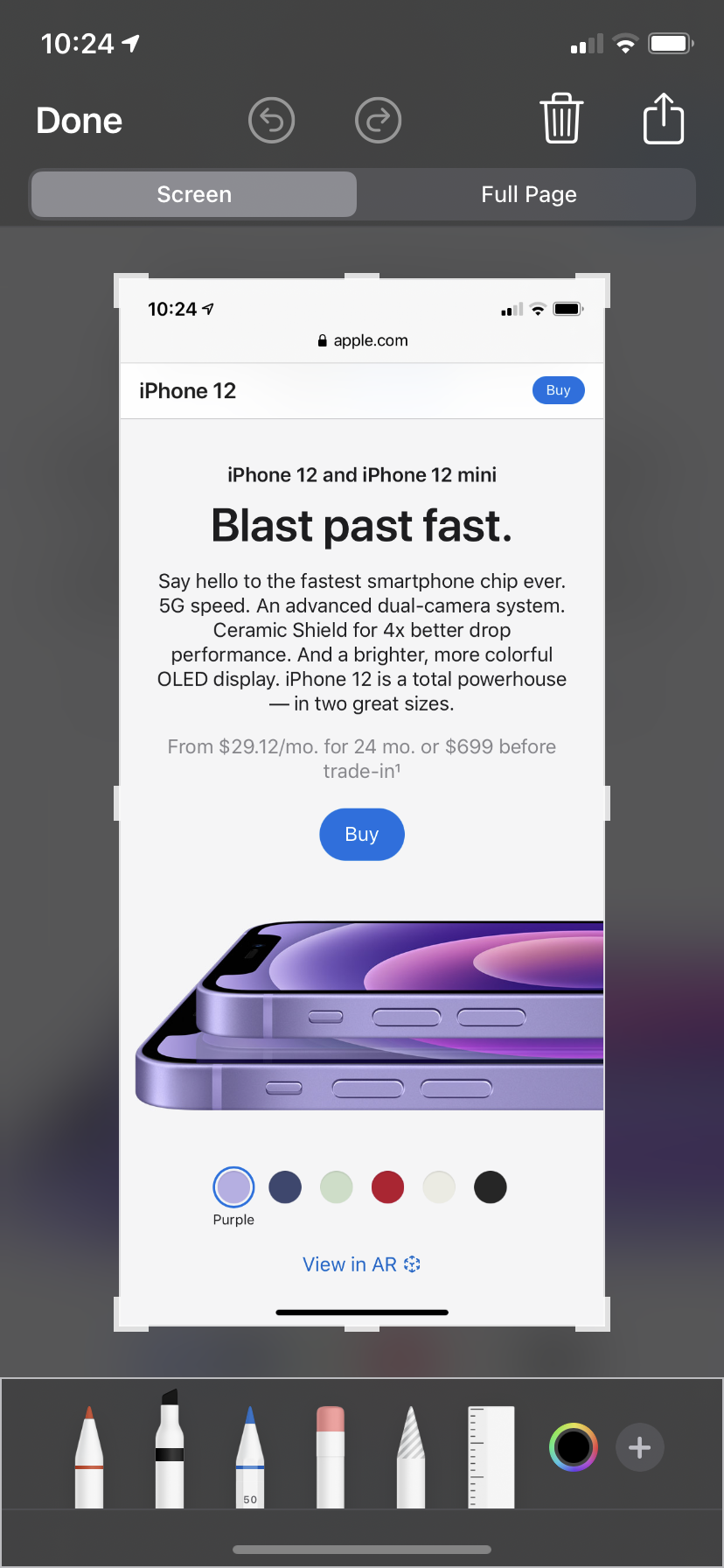
You can crop the screenshot or use Markup to annotate the image: you can draw on it, add shapes, add text, and more. See this Apple support document for more on Markup.
When you’re finished editing, tap the button that says Done. You can choose to save it to Photos or Files. Or, tap the share button and send it by email, Messages, or perform other actions.
You can, of course, annotate the screenshot later. To do so, open the screenshot from the Photos or Files app. Or, if it’s synced to the Photos app on your Mac, crop it in Photos. You can also drag it to the Finder to save a copy that you can edit with other apps. If you open a screenshot in the Preview app on your Mac, you’ll have access to the tools available in Markup, as well as other tools.
Record the screen of your iPhone, iPad, or iPod touch
You can record a video of the screen of your iPhone, iPad, or iPod touch. To screen record, you first need to enable the Screen Recording icon in Control Center. Go to Settings > Control Center, and tap + next to Screen Recording.
When you’ve done this, you’ll see a new button for this feature (which looks like a circled dot, ◉) when you swipe down from the top right of your device’s display. Tap this button, and it counts down from 3, then turns red to indicate that it is recording (◉).
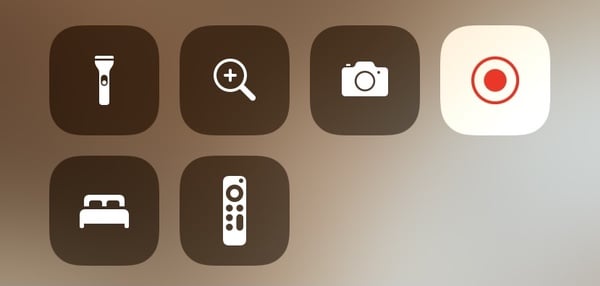
You can switch to a different app, and the recording will continue until you stop. To end a screen recording, tap the red button at the top of your screen, then tap Stop. (Note that on some devices, the red button may appear as a red circle to the right of the Dynamic Island; on devices without a Dynamic Island, the button is pill-shaped and surrounds the clock in the top-left corner, as shown below.)

Your device saves this screen recording in the Photos app. You can edit it there; for example, you can trim the beginning and end. You can also edit it later on your Mac, after it syncs via the Photos app.
Take screenshots on an Apple Watch
You may not think of this, but it is possible to take screenshots on an Apple Watch. To be able to do this, you must enable screenshots. Go to the Watch app on your iPhone, then tap General, and scroll down until you see Enable Screenshots; toggle this on.
To take a screenshot on the Apple Watch, press the side button and Digital Crown at the same time. Apple Watch screenshots save to the Photos app on your iPhone.
Finding screenshots and screen recordings in the Photos app
If you save your screenshots and screen recordings to the Photos app, you’ll find them in Library on all your devices. You can also find them in Albums; note the special albums labeled Screenshots and Screen Recordings.
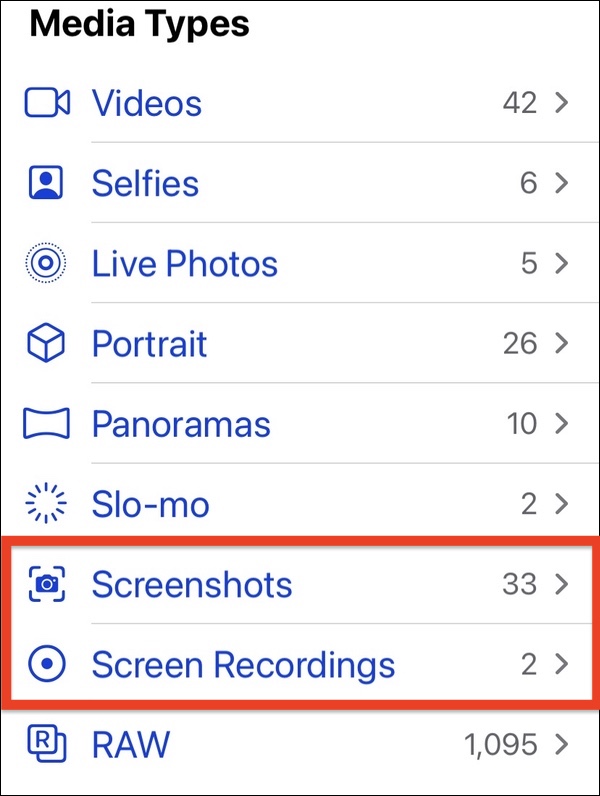
Remember that, on your Mac, screenshots and screen recordings save to a folder in the Finder. But if you add them to your Photos library, they’ll go into the Screenshots or Screen Recordings albums.
Take screenshots on an Apple TV
As with the Apple Watch, it’s probably rare to need to take screenshots of your Apple TV. But if you do, you’ll be happy to know that it’s possible. In fact, there are two ways to take screenshots or recordings of the Apple TV.
How to record your Apple TV from your Mac using QuickTime Player
The first uses the QuickTime Player app in your Mac’s Applications folder. Launch the app, then choose File > New Movie Recording. Click the down-pointing arrow next the red Record button, and choose your device.
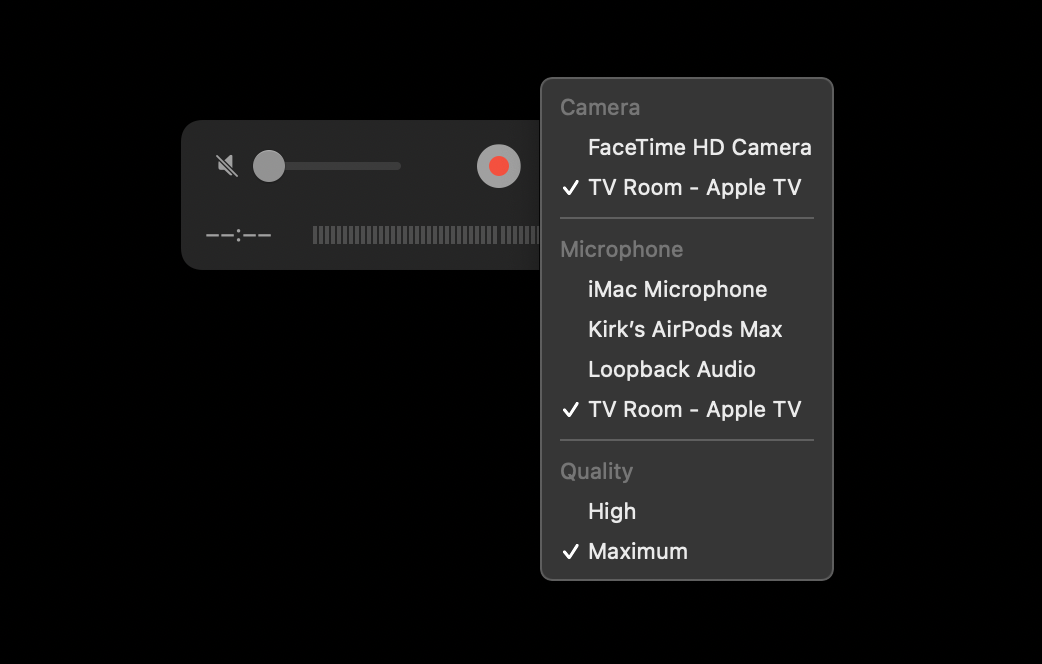
Click on the red button to record the device. Then, on the Apple TV, navigate to the screen you want to capture. On the Mac, take a screenshot of the QuickTime Player window.
How to screenshot your Apple TV from your Mac using Xcode
Another alternative is to download and install Xcode, Apple’s software development environment; Xcode is free on the Mac App Store, but it’s quite large: it’s a multi-gigabyte download, and it also downloads and installs some additional software when you first run it.
To set up your Apple TV 4K in Xcode, your Mac and Apple TV must be on the same Wi-Fi network. Xcode will find your Apple TV, but you’ll need to pair it.
On the Apple TV, go to Settings > Remote Apps & Devices. On Xcode, in the Window menu, choose Devices & Simulators. You should see your Apple TV.
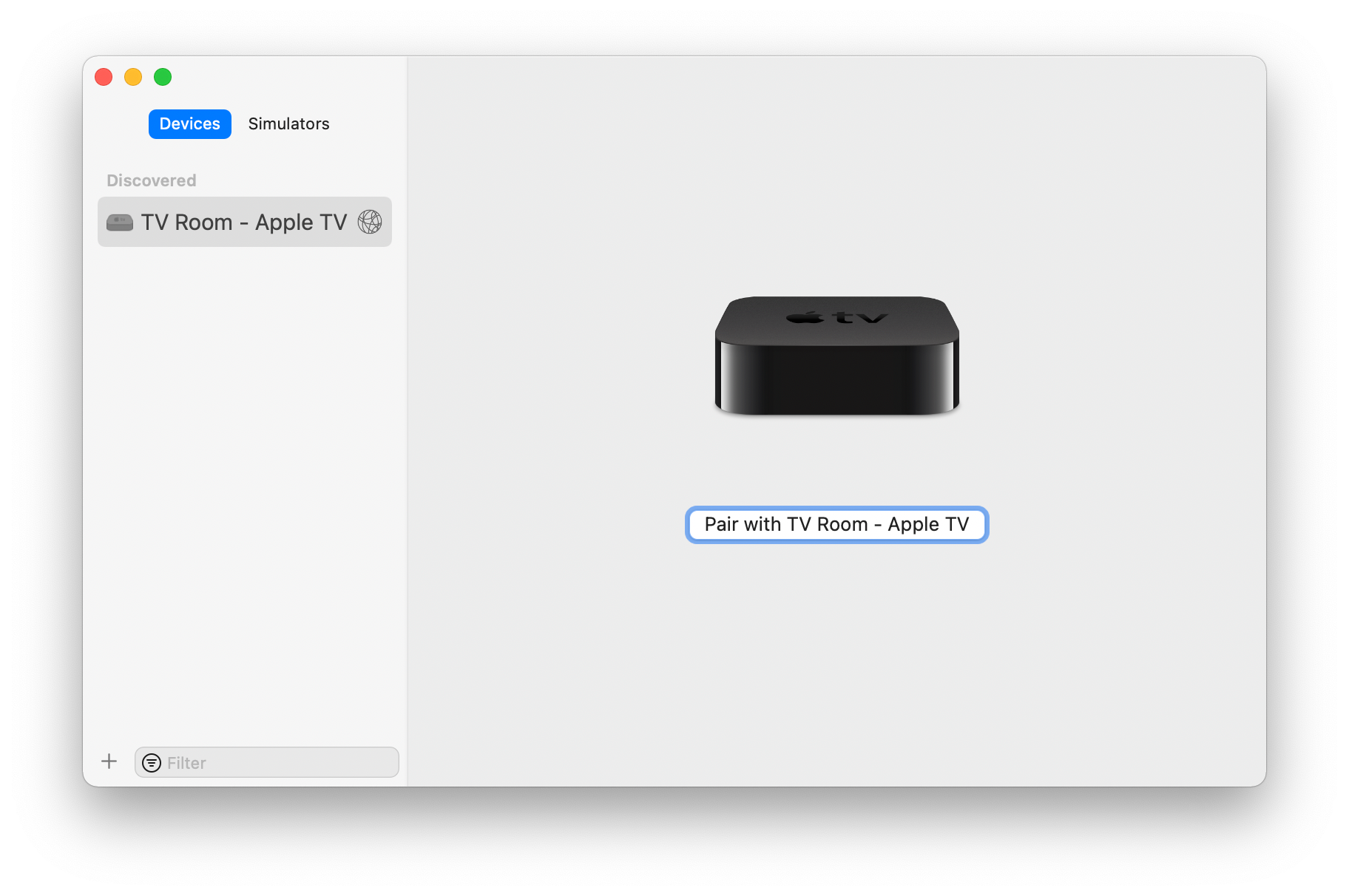
Click the Pair with button; your Apple TV will display a six-digit verification code. Enter that in Xcode. Xcode will then display the Apple TV like this:
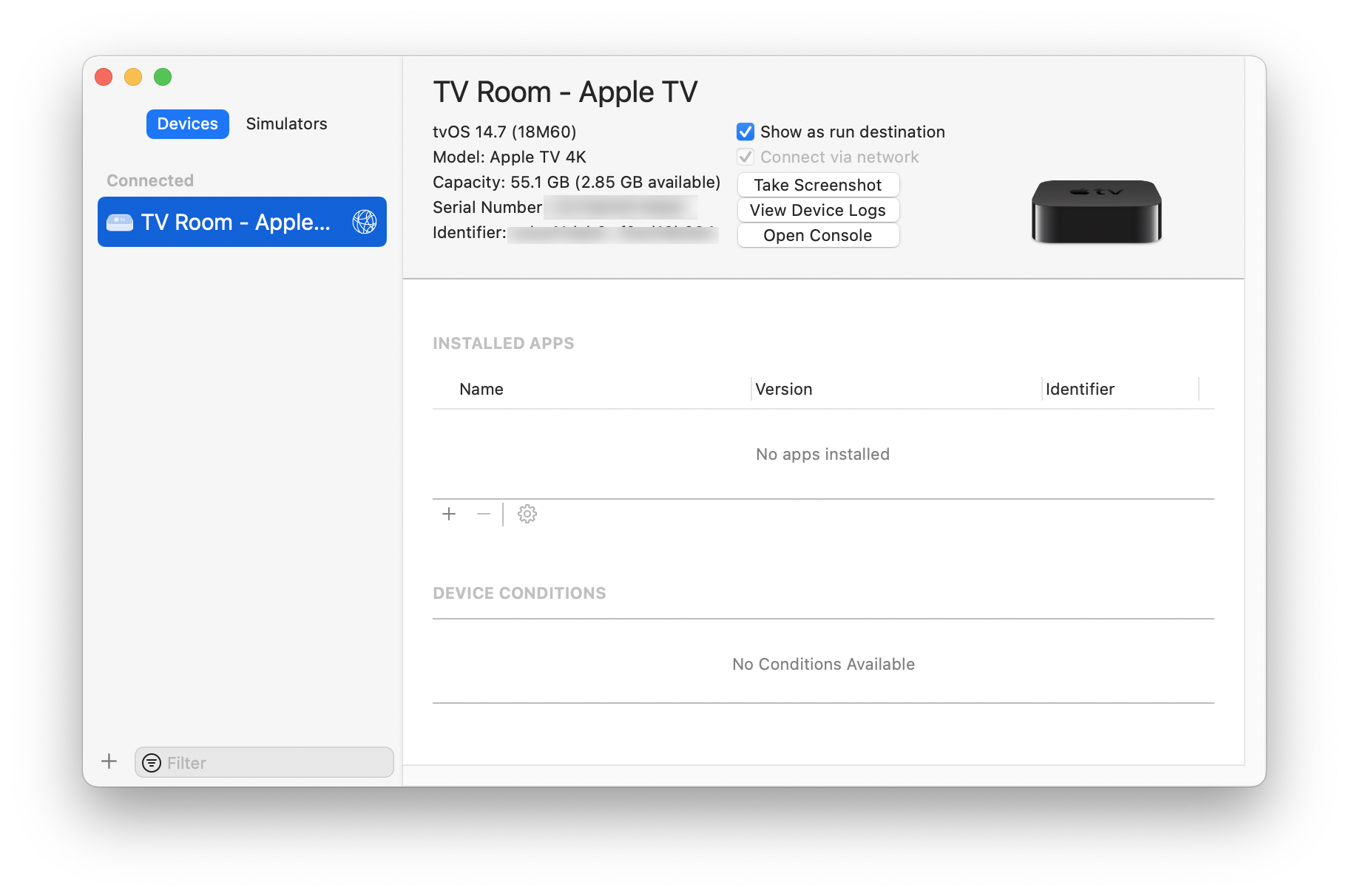
Set up what you want to capture on your Apple TV, then click Take Screenshot. The Apple TV’s screenshots save to the Desktop. Note that—as on the Mac, iPhone, or iPad—it will black our any protected content.
If you have an older Apple TV model, you can physically connect the device to your Mac; this will also enable you to take screenshots in Xcode. Older Apple TV devices have either a micro USB port or a USB-C port. After you connect your Apple TV to your Mac, follow the same instructions as above to take screenshots.
Screenshots can be a useful way to show others what’s on your device, or to preserve memories. They’re easy to take, and you only need to remember a few keypresses to take them.
How can I learn more?
 Each week on the Intego Mac Podcast, Intego’s Mac security experts discuss the latest Apple news, including security and privacy stories, and offer practical advice on getting the most out of your Apple devices. Be sure to follow the podcast to make sure you don’t miss any episodes.
Each week on the Intego Mac Podcast, Intego’s Mac security experts discuss the latest Apple news, including security and privacy stories, and offer practical advice on getting the most out of your Apple devices. Be sure to follow the podcast to make sure you don’t miss any episodes.
We talked about screenshots and more in episode 196 of the Intego Mac Podcast.
You can also subscribe to our e-mail newsletter and keep an eye here on Mac Security Blog for the latest Apple security and privacy news. And don’t forget to follow Intego on your favorite social media channels: ![]()
![]()
![]()
![]()
![]()
![]()
![]()